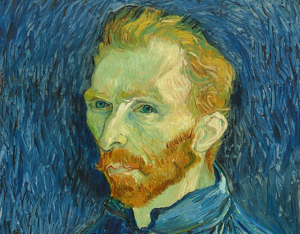
30th March is World Bipolar Day. This date was chosen as it was the birthday of famous artist Vincent van Gogh, who was posthumously diagnosed with bipolar. The primary aims of this day are to raise awareness of what bipolar is – and, just as important – what it isn’t, in the interests of banishing the stigma around this condition.
Characteristics of Bipolar
Bipolar is a severe mental illness. Extreme mood swings and changes in energy levels are the primary characteristics. Someone with bipolar can have long or short periods of stability but can then go “low” into deep depression, or “high”. In the “high” mood state, hypomania, mania, and psychosis are all possible experiences.
Bipolar was previously known as “manic depression” Amongst other things, this term doesn’t fully reflect the nature of the disorder, since people with bipolar also experience periods of relatively stable mood. Bipolar also has significant variations within it.
The most dangerous two symptoms of bipolar are severe depression, which can lead to suicidal ideation, or worse; and psychosis, where sufferers see and hear things which feel real to them but are not.
Hypomania is also dangerous, as it can easily suppress natural caution to the point of leading to reckless and self-endangering behaviours.
World Bipolar Day places an emphasis on flagging up the serious risks of untreated bipolar disorder.
What are the Different Types of Bipolar?
As mentioned earlier, there are variations within Bipolar. It is broadly divided into two types: Bipolar I and Bipolar II.
Bipolar I is diagnosed in those who have experienced at least one episode of mania lasting longer than a week. Periods of depression may also be experienced. Untreated manic episodes will generally last around six months if untreated in those with Bipolar I. Depressive episodes, if they occur, tend to last between six months and one year without treatment.
Bipolar II is characterised more by depressive symptoms. A diagnosis is given if at least one period of both depression and hypomania are experienced. Hypomania is a milder form of mania, although it is still a serious condition of course.
What is Bipolar Not?
Bipolar is not the same as what is generally described as “mood swings” The symptoms are significantly more severe and far beyond the bounds of what most people will experience in terms of mood variation. The periods of time over which mood symptoms of bipolar are experienced is also greater than the period over which mood swings within the standard emotional range will take place.

Other Important Information
There are many other things which everyone ought to be aware of regarding bipolar. For instance, one 2014 survey suggests that over 1 million Britons, nearly 2 per cent of the population, may be on the bipolar spectrum. This does not necessarily mean that all these people will experience the more severe effects of the disorder, but goers to show that it is more common than might be assumed. In the UK, getting a diagnosis of bipolar takes several years on average, according to some research, and multiple misdiagnoses are characteristic for any given case of bipolar.
As with many conditions which are poorly understood by society, bipolar disorder is frequently misidentified. Given that, amongst other things, bipolar disorder greatly increases an individual’s risk of suicide, misdiagnoses can be fatal. For this reason alone, the awareness-raising mission of World Bipolar Day remains hugely important.